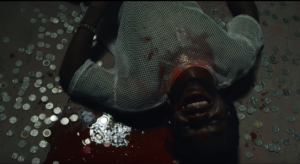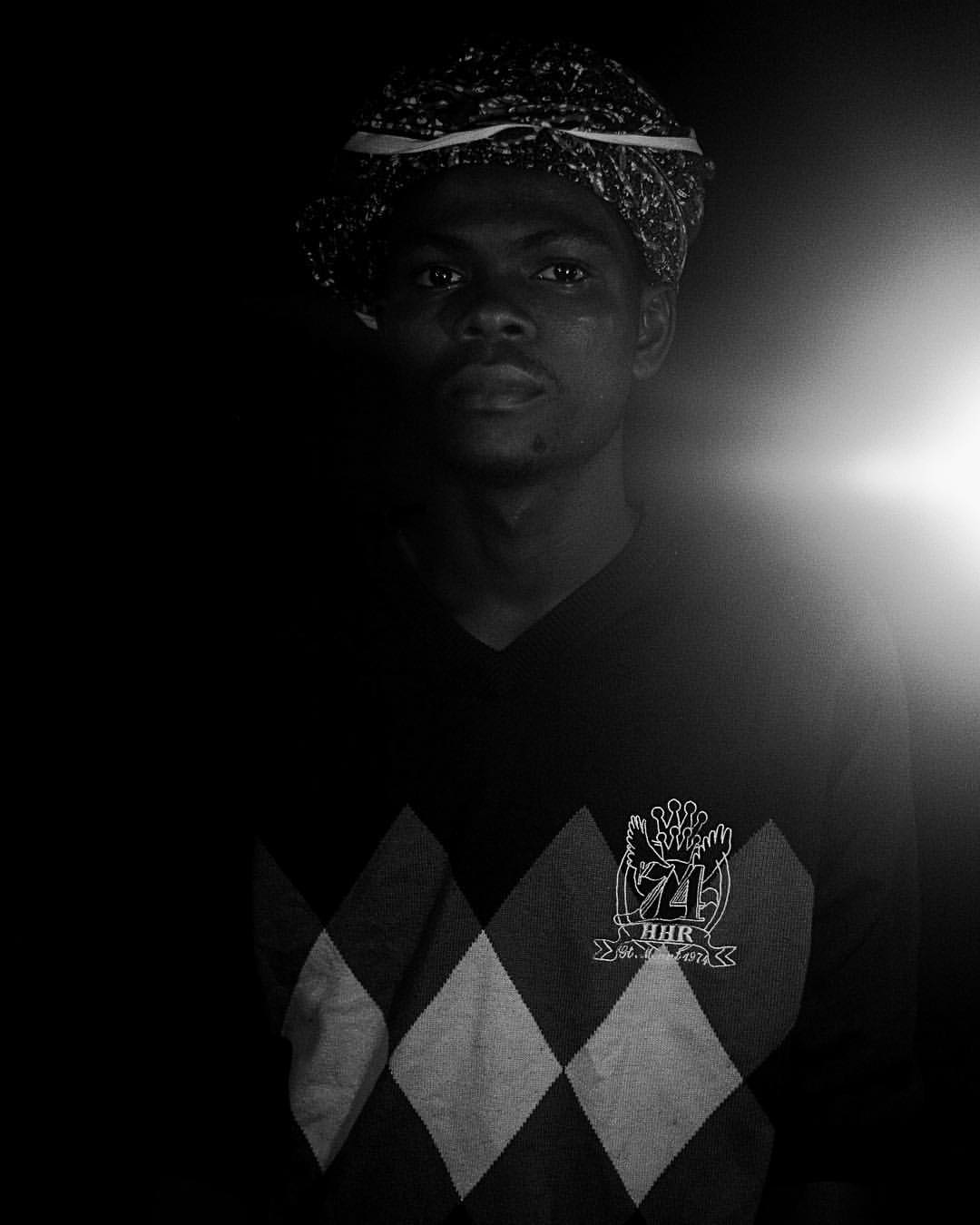Image/Graphic from: Akan’s ‘Me Sika Aduro‘ video
consider this: you are a company driver. one morning, while driving a company vehicle, a phone call comes through, and you receive it. you are still on the phone when you sight a ‘fine, fine lady’ (with a rather large derriere.) you follow with your eyes, and before you realize, there the vehicle was: in a gutter. You are left with a dented vehicle, a burst tire and a brain racking itself for an explanation to give to your boss. this was the situation in a 2004 hit hiplife song, Na Who, by Dr. Poh (featuring; Shilo, 2tee, and Mamashuta.) In ‘na who cause am,’ the song’s chorus queried, ‘e be the telephone or the fine, fine lady?’ (no, the driver, a man, is not included in who/what could possibly be faulted for the accident.) towards the end of the song’s first verse, the fault is placed, squarely, on the ‘fine, fine lady.’ it follows. for, woman, from genesis, has been blamed for the fall of man. she operates, we’re indoctrinated, largely by seducing innocent, helpless man – a curiosity considering the widespread notion of men’s innately superior cognitive abilities to women’s. the cliché is true: images are powerful. and popular culture is no less potent an avenue for monitoring – and, if need be, as is mostly the case, altering – sociocultural norms. Akan is one of my favourite creators in the arena of contemporary ghanaian popular culture. in a review i wrote of his debut album, Onipa Akoma, i summed the LP up thus: Life is to be lived pleasantly, just as much as it is to be done responsibly – this seems to be the ultimate message of Onipa Akoma; and it is a lovely and humane one. on the 12th of may 2018, Akan officially released the music video for- Me Sika Aduro off the Onipa Akoma album. Yaw Skyface, director of the video, makes a commendable effort at intricate audiovisual storytelling. and the result is quite striking. the film is segmented into four parts – akɔnɔ, suatra, tumii, ahweaseɛ – which steadily plot out the narrative: a young man desires money. He does what he thinks he has to do to fulfill this desire. He gets money, lives that high life… but there’s the catch – which is to be revealed in the final segment, ahweaseɛ (which translates from Akan as: (the) fall). his segment opens with a medium long shot of Akan sitting on a bed. He is semi-circled by four women, also seated on the bed. In another shot of the same scene, the women, all four of them at once, get to work on the lone man – stroking and seducing.and just before they get his back to touch the bed, the scene cuts to another one: here, the lone man is lying, his mouth, neck and shirt soiled red, in a pool of his own blood. he is surrounded still, only this time by ghana pesewa coins. a cut-back to the bedroom scene: man’s back is flat against the bed. the quartet is still at work. this time, though, their stroking and seduction have intensified to the degree of suffocation and strangulation. we’re subjected to some six seconds of this disconcerting act, and then the credits begin to roll. so, what then do we have here but yet another contemporary narrative that aligns itself with an ancient trope. “fear woman. she, ever the temptress, will come, especially in your high times, with her fangs and her claws, and she will seduce you to your ahweaseɛ. beware, man, of woman.” there are many tropes that need to be altered, many more that need to be rid. concerning this particular trope, we could, if we so need tropes, do with one that is not rooted in irresponsibility and demonization. now, that would be proper lovely and humane, wouldn’t it? Editorial note: To appreciate how much this ‘blame the woman’ logic goes beyond representations in various Ghanaian art forms, do pay attention to the recent story in which a leader in the Ghana Police Service reportedly indicated that many unexplained motor accidents have been due to how female road users dress. See the story here https://www.pulse.com.gh/filla/ladies-in-sexy-dresses-cause-unexplained-accidents-police-id8777222.html
a cut-back to the bedroom scene: man’s back is flat against the bed. the quartet is still at work. this time, though, their stroking and seduction have intensified to the degree of suffocation and strangulation. we’re subjected to some six seconds of this disconcerting act, and then the credits begin to roll. so, what then do we have here but yet another contemporary narrative that aligns itself with an ancient trope. “fear woman. she, ever the temptress, will come, especially in your high times, with her fangs and her claws, and she will seduce you to your ahweaseɛ. beware, man, of woman.” there are many tropes that need to be altered, many more that need to be rid. concerning this particular trope, we could, if we so need tropes, do with one that is not rooted in irresponsibility and demonization. now, that would be proper lovely and humane, wouldn’t it? Editorial note: To appreciate how much this ‘blame the woman’ logic goes beyond representations in various Ghanaian art forms, do pay attention to the recent story in which a leader in the Ghana Police Service reportedly indicated that many unexplained motor accidents have been due to how female road users dress. See the story here https://www.pulse.com.gh/filla/ladies-in-sexy-dresses-cause-unexplained-accidents-police-id8777222.html

by Moshood
Lead, Yoyotinz





